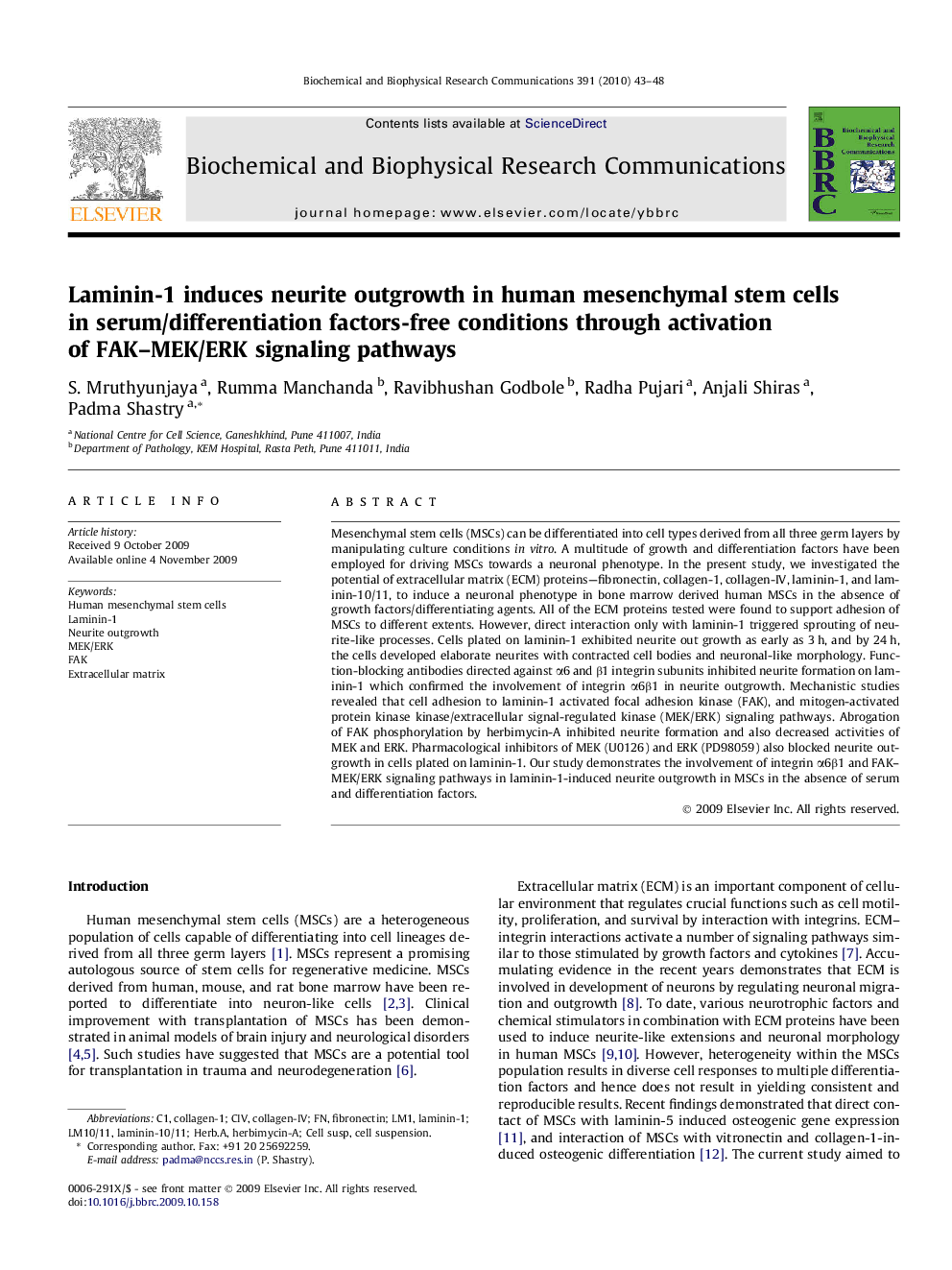| Article ID | Journal | Published Year | Pages | File Type |
|---|---|---|---|---|
| 10765270 | Biochemical and Biophysical Research Communications | 2010 | 6 Pages |
Abstract
Mesenchymal stem cells (MSCs) can be differentiated into cell types derived from all three germ layers by manipulating culture conditions in vitro. A multitude of growth and differentiation factors have been employed for driving MSCs towards a neuronal phenotype. In the present study, we investigated the potential of extracellular matrix (ECM) proteins-fibronectin, collagen-1, collagen-IV, laminin-1, and laminin-10/11, to induce a neuronal phenotype in bone marrow derived human MSCs in the absence of growth factors/differentiating agents. All of the ECM proteins tested were found to support adhesion of MSCs to different extents. However, direct interaction only with laminin-1 triggered sprouting of neurite-like processes. Cells plated on laminin-1 exhibited neurite out growth as early as 3 h, and by 24 h, the cells developed elaborate neurites with contracted cell bodies and neuronal-like morphology. Function-blocking antibodies directed against α6 and β1 integrin subunits inhibited neurite formation on laminin-1 which confirmed the involvement of integrin α6β1 in neurite outgrowth. Mechanistic studies revealed that cell adhesion to laminin-1 activated focal adhesion kinase (FAK), and mitogen-activated protein kinase kinase/extracellular signal-regulated kinase (MEK/ERK) signaling pathways. Abrogation of FAK phosphorylation by herbimycin-A inhibited neurite formation and also decreased activities of MEK and ERK. Pharmacological inhibitors of MEK (U0126) and ERK (PD98059) also blocked neurite outgrowth in cells plated on laminin-1. Our study demonstrates the involvement of integrin α6β1 and FAK-MEK/ERK signaling pathways in laminin-1-induced neurite outgrowth in MSCs in the absence of serum and differentiation factors.
Keywords
Related Topics
Life Sciences
Biochemistry, Genetics and Molecular Biology
Biochemistry
Authors
S. Mruthyunjaya, Rumma Manchanda, Ravibhushan Godbole, Radha Pujari, Anjali Shiras, Padma Shastry,
